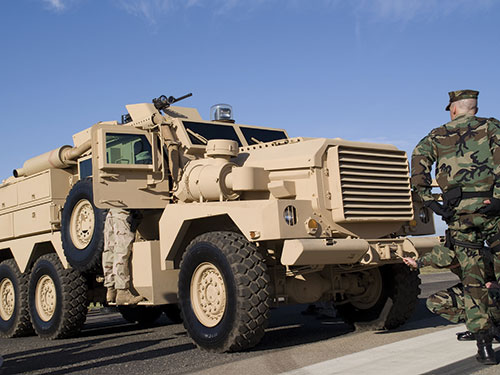
Veterans may need assistance obtaining a CDL or additional training on differences between military and commercial vehicles.
This article is from the Fall 2015 issue of The Quill. To view the full issue, visit The Quill archive.
Due to the current shortage of qualified drivers, some companies are turning to military veterans. These veterans have experience driving vehicles similar to those used throughout the transportation industry. Some companies have hiring and retention programs designed to take advantage of this experience. Although many veterans make great employees, hiring veterans can be challenging. Many will need assistance obtaining a CDL and a small amount of veterans may be affected by Post Traumatic Stress Disorder (PTSD) or similar conditions.
According to “Hiring Veterans,” an article written by Tom Berg and published on truckinginfo.com, veterans have good work ethics, are team-oriented, respect authority and procedures, possess leadership skills and are able to solve problems on their own. These skills combined with years of driving experience while in the military can make veterans high quality drivers. However, they are not required to have a CDL to drive military vehicles and may need assistance obtaining one.
Some veterans may need to learn or practice driving skills as well. Most military trucks and tractors are equipped with automatic transmissions. Many military vehicles have hydraulic brakes and most military hauling operations rarely require backing a semi-trailer. However, there are currently programs in all 50 states that allow recently separated veterans to substitute two years of driving a similar military vehicle, verified by the veteran’s former commanding officer, for the CDL skills test. There are also special programs at trucking schools designed to teach veterans the skills they did not develop in the military.
One concern employers may have when hiring recently separated veterans is PTSD, which involves flashbacks of traumatic experiences that cause the person to relive the event and any emotions or physical feelings they had at the time. These flashbacks can be triggered by everyday events, such as doors slamming or seeing a place that reminds the person of where the trauma occurred. However, most veterans are not affected and PTSD is not unique to veterans.
According to the U.S. Department of Veterans Affairs, approximately 20 percent of Iraq war veterans and 11 percent of veterans who fought in the war in Afghanistan have been afflicted by PTSD. Others who have been exposed to traumatic events such as violent crimes, child abuse, car or plane crashes and natural disasters may also experience symptoms of PTSD. The severity and duration of PTSD can also vary widely from minor to severe cases lasting a few months to years. Employers should not ask about PTSD during interviews due to protections under the Americans with Disabilities Act (ADA).
Veterans tend to have good work ethics, be team-oriented, respect authority and procedures, possess leadership skills and are able to solve problems on their own. These skills can make veterans high quality drivers.
Employers looking to hire veterans should know that hiring veterans can be challenging. A report from the Center for a New American Security (CNAS) compiled in-depth interviews of 69 companies. The majority of these companies involved in the CNAS report cited skill translation, understanding the skills developed while completing military assignments, as one of the biggest challenges to hiring veterans. Veteran resumes often include acronyms or jargon that civilian employers may not understand and they often list more team accomplishments than individual accomplishments due to the strong team mentality that is valued in the military. Interviewing veterans is often the best way to determine the skills they possess and to learn more about their individual accomplishments.
The CNAS report also cited finding veterans to be another challenge. Asking current veteran employees to reach out to other veterans, using social media, and communicating with veteran organizations or military assistance groups can help to increase the number of veteran applicants. Despite these challenges, most of the employers interviewed for the CNAS report stated that hiring veterans “has been good for business.”
For more information, visit Hiring Our Veterans, a resource from the American Trucking Associations.